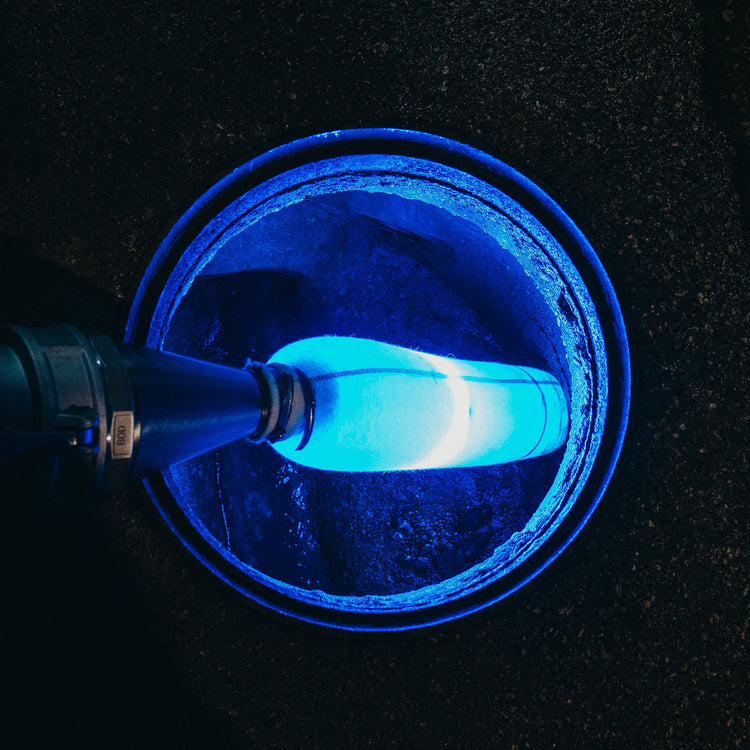
Exploring the Differences Between UV and Epoxy Resins in CIPP Applicat
Introduction
Cured-in-Place Pipe (CIPP) technology has revolutionized the field of pipe rehabilitation and trenchless sewer repair. One crucial aspect of CIPP applications is the choice of resin material used to line and reinforce the existing pipes. Among the various options available, UV-cured and epoxy resins stand out as two popular choices. In this article, we will delve into the differences between these two resins, their applications in CIPP, and the factors that might influence the choice between them.
Understanding UV and Epoxy Resins
-
UV Resins: UV-cured resins are polymers that solidify and cure when exposed to ultraviolet (UV) light. These resins are typically formulated with photo-initiators that initiate the polymerization process upon exposure to UV light. UV curing is a rapid process that offers the advantage of quick curing times, making it ideal for projects that require minimal downtime. Additionally, UV resins exhibit excellent adhesion properties and create a tight seal against the host pipe.
-
Epoxy Resins: Epoxy resins are thermosetting polymers that cure when mixed with a hardener or curing agent. This chemical reaction generates a strong, durable, and chemically resistant material. Epoxy-based CIPP systems have a long history of successful applications in sewer and pipe rehabilitation. They offer superior structural integrity, resistance to chemicals and abrasion, and the ability to conform to various pipe shapes and sizes.
Comparing UV and Epoxy Resins in CIPP Applications
-
Curing Time: One of the most significant differences between UV and epoxy resins is the curing time. UV-cured resins offer rapid curing, often within minutes, due to the immediate activation of the photo-initiators. This allows for quicker project completion and reduced disruption to surrounding areas. Epoxy resins, on the other hand, require a longer curing period, with a wide range of cure times dependent on the hardener used, the ambient temperature surrounding the pipe, working time, and other factors. Houseliner offers a wide range of hardeners in their product line, ensuring optimal working and curing times for any conditions.
-
Structural Strength: Epoxy resins are renowned for their exceptional structural strength and ability to restore the original load-bearing capacity of pipes. They provide a robust, long-lasting solution for rehabilitating damaged pipes, especially in scenarios where structural integrity is critical. UV resins also offer good strength and sealing capabilities but may not match the comprehensive structural reinforcement provided by epoxy resins.
-
Chemical and Abrasion Resistance: Epoxy resins excel in environments where pipes are exposed to harsh chemicals or abrasive materials. Their resistance to corrosive substances and their ability to withstand wear and tear make them a preferred choice for industrial applications. UV resins may not be as resistant to chemicals and abrasion, making them better suited for less demanding environments.
-
Flexibility and Control: UV resins offer excellent flexibility and are well-suited for applications that involve curved or non-linear pipes. UV resins will not begin to harden until exposed to UV light, allowing for virtually unlimited working time. This allows for more control and less stress should any issue arise during the inversion process. Epoxy resins also exhibit flexibility but may require more careful handling when dealing with difficult situations due to its limited working time.
-
Installation Process: The installation process for UV and epoxy resin-based CIPP systems differ. UV systems require specialized UV light equipment, which can increase project costs. Epoxy systems require proper mixing of the resin and hardener, and the curing process relies on temperature and time. Both systems demand skilled technicians for successful installation.
Choosing the Right Resin for the Job
The choice between UV and epoxy resins in CIPP applications should be based on project-specific requirements. For projects with a focus on rapid completion and sealing, UV resins may be preferable. On the other hand, when structural reinforcement and chemical resistance are paramount, epoxy resins should be strongly considered.
Ultimately, a comprehensive assessment of the project's needs, budget, and utilization will guide the resin selection process. Consulting with experts in the field of CIPP and resin technology can provide valuable insights and ensure the optimal choice for a successful pipe rehabilitation project. If you have any questions, feel free to fill out the connection form on our website to talk to our technical training team!
